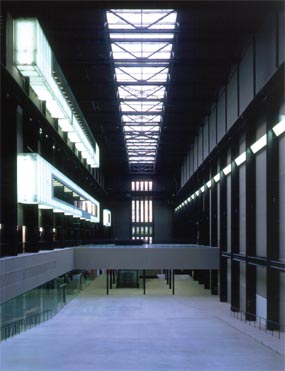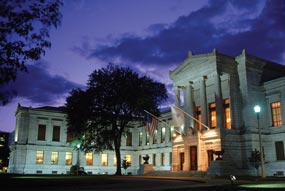
|
 |

Access All Areas
Charitable donors fund almost all of the world’s great cultural institutions, allowing art galleries, opera houses, museums and theatres to remain open. But why do people give away huge amounts of money? Richard Middleton discovers that it is not completely altruistic; there are exclusive benefits to be had.
Henry Tate, who made his fortune through sugar refining, spent £80,000 purchasing and building a gallery in which to house his collected works of art. This guaranteed that not only his own collection, but a wide range of British art would have a venue worthy of public display. However, it also ensured that the name Tate would have lasting resonance. Since 1889 when Tate made his offer, the financial burden of running galleries and museums has changed very little. When Tate Modern was established in 2001, costs to move to the disused power station on the banks of the Thames alone topped £130m. With such high costs, the maintenance and development of many cultural institutions are only possible through the help of wealthy donors. Galleries and museums across the world have long sought corporate help. Some individual museums are actively created at the behest of multi-million dollar donors, such as the Getty Museum in Los Angeles, the product of a huge financial endowment from Sir John Paul Getty and his family’s foundation. Wealthy individuals are now actively wooed as a source of funding for cultural institutions. In return, institutions are able to curry favour through an array of incredible but little-known perks, available to only the most generous donors. ‘Much of our museum’s work is made possible through the generosity of our individual supporters,’ says Hannah Boulton of the British Museum. ‘Although the UK government does provide core funding, the collection’s full potential couldn’t be realised without the help of our donors, both from the UK and around the world. They ensure that the museum’s collections remain accessible to all.’ Behind the scenes
Rare pieces are put on show and major works of art are easily accessible without the hustle and bustle of the crowds. Experts and curators mingle with the guests, allowing informed discussions about the work. Intimacy with the objects within such a relaxed and spacious environment is a rare occurrence for the most coveted of displays, and an event that many donors see as good reward.
Malcolm Rogers, director of the Boston Museum for Fine Arts, is famous for his gettogethers, which are open to the museum’s most generous donors. An extravagant buffet dinner is served in Rogers’ home, which is adorned with 17th-century portraits, while a live band plays in the background. The chance to discuss the merits of Picasso, Rubens or Caravaggio over dinner with one of the foremost experts in fine arts is not available to everyone. |
Donors to London’s British Museum are offered ‘the chance to become more deeply involved with the museum’, Boulton explains. ‘We host a series of events for our patrons. We welcome them to join the director, Neil MacGregor, and our teams of curators and experts to explore the rich cultural history assembled within the museum.’ But for the most generous of donors, perks can even mean incredible visits abroad. The Boston Museum of Fine Arts organised a trip to Cairo with Egyptologist Rita Freed. Once there, the small group were able to gain access to areas strictly prohibited to tourists, including exploring the chambers underneath the pyramids. Rewarding the best donors Ann Campbell, the opera’s director of strategic planning and special projects, explains: ‘These are some of the ways in which we acknowledge and recognise donors who make long-range gifts to us. Without such support, our ticket prices would be twice what they are and we would have difficulty planning our seasons in advance.’ At the upper end of such support, donors can expect exclusive privileges, including dinners on the stage and cocktail parties with the cast. Name dropping
The Great Court project at the British Museum was made possible by funding gained from donors. The museum, in recognition, has inscribed these individuals’ names around the central drum of the famous Round Reading Room, which now represent an ever-present link between the individuals and the institution. The Weston Family, the major benefactor to the project, donated over £20m. That donation, while ensuring the institution could progress and expand successfully, has also brought the family the prestige of being associated with such a famed cultural resource. There are, however, concerns that such generous donations can elicit a negative influence over an institution. The largest of donations can mean a seat on the board and, some fear, the power to mould the museum as the donor may wish. Indeed, the renowned Smithsonian Institution, based in Washington DC, was offered over $35m by businesswoman Catherine B Reynolds. Despite the enormous contribution, the museum eventually declined because she had wanted to create a new gallery to acknowledge 15 successful Americans, the majority of whom she would have chosen herself, a concession the Institution, and the wider scientific establishment, could not accept. Mutual benefits Without donors, many museums, galleries, theatres and opera halls across the world would find it hard to remain afloat. And most institutions are more than happy to reward and maintain generous donations by offering visits, exclusive lunches and intimate dinners. While rare experiences and lavish cocktail parties with curators and artists may persuade some to give more, there is genuine interest among donors about where their money goes. Many have long-held interests and a desire to learn more and educate themselves further; indeed, some are highly knowledgeable about the art and artefacts on display. And it is this close relationship between donor and institution that provides the essential support required by many of the world’s cultural establishments. Both parties benefit from the experience, giving donors unrivalled access and exclusive privileges, but also ensuring that many of the world’s cultural and artistic treasures continue to be accessible to a wider public. |
|||








